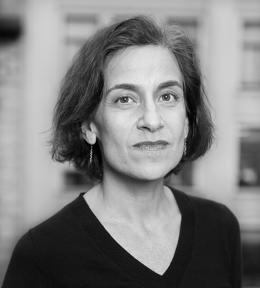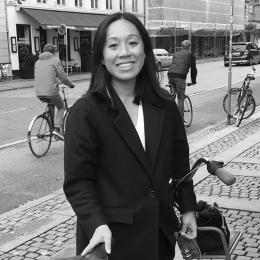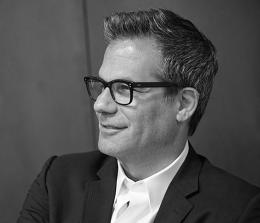How Urban Design Perpetuates Racial Inequality–And What We Can Do About It
Cities are complex organisms shaped by myriad forces, but their organization bears the fingerprints of planners and policy makers who have shaped them for decades. At the root of many of these practices is racism, and modern cities bear the legacy of that discrimination.
In an era of social protest, when movements like Black Lives Matter are bringing inequality back into the national conversation, it’s time to reassess the practices that have perpetuated these problems—and how we fix them.

But the first step is understanding the urban policies that got us here. For decades, planners slashed through neighborhoods in the name of urban renewal and slum clearance, underwritten by federal funding from the Housing Act of 1949 and the Federal Aid Highway Act of 1956, displacing residents using tactics like eminent domain and condemnation laws.
As a result, much of our highway system courses through black neighborhoods (which helps explain why they’ve often become spaces of civil protest). “This method fails,” wrote grassroots urbanist Jane Jacobs in the Death and Life of Great American Cities, one of the most influential planning books ever written. “At best it merely shifts slums from here to there, adding its own tincture of extra hardship and disruption. At worst, it destroys neighborhoods where constructive and improving communities exist and where the situation calls for encouragement rather than destruction.”
Access to public transportation—which affects everyone in a city but disproportionately impacts low-income and minority neighborhoods—is another factor. In the San Francisco Bay Area, some have argued that the scarcity of public transit in certain neighborhoods is an intentional tactic to keep affluent communities isolated and more segregated. Robert Moses purposefully designed some overpasses on Long Island to be too low for buses to drive under them, thereby segregating one of its beaches from low-income residents. “Legislation can always be changed. It’s very hard to tear down a bridge once it’s up,” he told his biographer, Robert Caro.
Realtors have also contributed to racial segregation through practices like blockbusting—using scare tactics to convince white homeowners to sell cheaply—and racial steering—guiding prospective homebuyers to certain neighborhoods based on race. This process has led to increased racial tensions, as is what happened in East New York, a low-income neighborhood in Brooklyn which has recently been rezoned in an effort that some say will lead to more racial displacement. Others view the rezoning as necessary to boost affordable housing stock in the city.
These examples are by no means an exhaustive list of how racism has influenced modern cities, but representations of how complex and deep the problem is. Recognizing that design can’t solve all of our social problems, we asked architects, scholars, urbanists, and planners to share their recommendations for ways design can be a starting point for more equitable cities.
Redesign Designers
Justin Moore, an architecture professor at Columbia University, believes that while designers focus on creative solutions for urban problems, issues that are rarely broached are shortfalls within the profession, like diversity, a deep understanding of the communities in which they’re building, and the methodology of design education.

“There is a need to redesign the designers, and to give them the tools and competencies to work within social constructs and spatial contexts that they are meant to serve. Designers spend much of their academic and professional training to build the spatial, technical, communication, and critical-thinking skills that are needed to do the difficult work of transforming spaces and places. They use their skills, often with good intentions and ‘best practices,’ toward results that may not align with what is needed or wanted in a given context.
“There are major blind spots, and the design professions and design education systems need to develop other sensibilities, frameworks, skills, and technologies for designers and design practice that includes not only social or community engagement but also better understanding and relations.
“The demographics of the design fields are improved from a few generations ago, but there are still very few people of color or from lower-income backgrounds in these fields or in the schools—and certainly there are few in the leadership, resource-allocating, and decision-making positions. This results in a missed opportunity to have the diversity of understanding, ideas, talent, and perspectives for the very important role that designers have in influencing the constant change of urban and built environments.
“Imagine if there were only a small number of musicians, artists, athletes, or leaders of color in shaping America and its identity. How much would be lost? In 2016, it remains the case that the majority of the people who plan, design, and build our communities and cities lack the diversity of those same communities and cities. It is a big problem that is not being addressed or taken seriously at the broad scale and scope necessary to make a meaningful impact.
“It is difficult to pinpoint or articulate the direct impacts that design has on the complex social and racial inequities that have been present in our cities for generations,” Moore adds. “Advocates and people in leadership rightly focus on more legible policies and actions like police training and judicial reform, or better access to education and jobs. But design does have an impact across the multiple issues and grievances that people have about the inequities that exist in American society and its spatialized contexts: quality housing, transportation, public spaces and facilities, environmental conditions, and the other tangible ways that designers help shape built environments.”
Build Opportunities For Freer Movement Through Public Space
Isis Ferguson is the associate director of city and community strategy at Place Lab, an initiative at the University of Chicago led by artist and activist Theaster Gates. She sees ample room for more cities to become more equitable for their citizens by becoming more physically inviting.

“Cities can function as magnificent places of excellence and can also be governed and experienced as repressive places enforcing flawed or even bad policies,” Ferguson says. “Public spaces alone will not create the vitality and empathy we seek in and from our cities. Universally designing for everyone can create homogenized, soulless places that have all people in mind but have meaning or use for no one.”
“In cities in the United States, we cannot pretend that all bodies have the freedom to move through, occupy, and enjoy public space. The perception of black and brown bodies gathering in public space routinely reads as suspect, criminal, or illegitimate. Peoples’ rights to convene or congregate becomes interrupted, sometimes—ever more frequently—through limitation, denied access, and force. If your very existence is read as a violation, is public space really for you? What looks and feels safe to some in public space—like security cameras and police as traditional forms of surveillance—can be experienced by others as another dimension of the state violence.
“Projects in the public realm need to be informed not only from more disciplines but from more kinds of people. Artists, misfits, outsiders, elders, immigrants, people of color, and women have been leading community development efforts in unconventional ways, partly because they have not been invited to the table and also because their varied lived experiences offers something more or counter to the standard advanced for our civic commons, parks, plazas, and other urban public assets.
“The space between who is considered an expert and who is typically on the margins of conversations about public space needs to be collapsed. If that happens I think cities will feel, function, and be designed with multiple points of view, engendering spaces that promote social mixing and most importantly social equity.
“Public space is contested ground in our country. Are there design solutions that promote social integration but also uphold the dignity of the people once they enter that space? Asking the typically untapped people–artists, misfits, outsiders, elders, immigrants, people of color, and women what the most joyous, liberatory, and authentic spaces are for them is a good start at imagining more for public life and for creating places of greater possibility for all in the public realm.”
Fix The Broken Policy Process
Allison Arieff—a contributing writer for the New York Times and the editorial director of SPUR, a nonprofit planning think tank—argues that building more equitable cities starts with mending the way governments make decisions.

“A constant of so many seemingly intractable urban design challenges is broken public process,” she says. “It’s not the people aren’t being given the opportunity to weigh in on projects, from condo towers to high-speed rail. They are—but it seems that for all the talk of stakeholder engagement, few are satisfied with the processes or outcomes. Even well-designed, well-intentioned projects become the subject of lawsuits, protests, even reversal of project approvals.
“Opposing sides now often engage consultants from the get-go to develop talking points and strategies for getting projects approved as well as making sure projects don’t get approved. This is not an easy quandary to solve but it seems the most pressing and is symptomatic of the broader culture’s current difficulty in communicating across, and even within, cultural, economic, and racial lines. If compromise is viewed as weakness, little progress can be made. I have no easy solution; I want to keep thinking about how the process might work better for more people and more projects.”
Demand More From The 1%
Benjamin Grant, urban design policy director at SPUR, thinks that there needs to be a redistribution of resources in cities—starting with the rich.

“This has been said before, but for me good cities are machines for managing mixture,” Grant says. “By substituting public goods—particularly public transit and public space—for private ones, cities offer a (complex, imperfect) bulwark against social and economic stratification. Elites in great cities depend on public goods and have a strong interest in applying their disproportionate resources to maintaining them. Think of Central Park or the New York City subway—rescued by wealthy and politically connected boosters. Low-income people are enfranchised by public goods, and are enabled to partake of city life alongside the powerful.
“Of course this in no way means that cities are egalitarian. The corporate baron and the immigrant laborer live profoundly and unjustly divergent lives, but in a city where public goods are abundant, they encounter one another as ordinary people, drawing on the same resources in the same space. Where large numbers of elites can opt out—into private schools or private cars for example—the investment of the powerful in public goods becomes an abstraction, something to do on progressive principles, not practical need.”
Plan Cities Around A Public Life Movement
The Gehl Institute—a policy consultancy that spun off of urbanist Jan Gehl’s architecture firm, and which just opened an office in the United States—believes that designing cities for stronger public life could address equity issues.

“The public realm works when you have this notion of trust and this notion of ‘ours’—we have to learn how to co-exist,” says Jeff Risom, chair of the Gehl Institute and managing director of Gehl Architects in the United States. “Our cities are clearly segregated. We want more mixing racially and economically in public space. We want neighborhoods to be healthier, we want to increase the amount of physical activity we get. Public life could be a tool to address major urban challenges to equity, access to opportunity, health, and sustainability. A thriving public life has to do with a very active, diverse form of participation in public life ranging from civic engagement—things like voting and organizing—to everyday routines like feeling like you can cross a street safely.”
In order for cities to facilitate a stronger sense of public life, the Institute argues that governments need to take stock of their civic spaces.
“It’s not just miles of road or square feet of park space; we want to equip some decision-makers with people-centered metrics to make sure it’s inviting to different social income groups and that’s hard,” Risom says. “How much time are people spending in the public realm, not just outside, but in civic institutions like libraries or community centers and who is spending time there? We need to know about their income, how far they travel. Here data and technology can help us get that information. We also need to know tough stuff that’s messy to find, like how people feel there. So do you feel welcome? Are you participating in community activities? Are you civically active? How can we help you become civically active?
“A big part is how the public realm can provide folks with access to opportunity. So far, I don’t think a lot of it has been thought of that way. We have streets and spaces, which are these incredibly valuable public assets, and we don’t utilize them enough for things like civic services. We don’t use them enough to ensure that citizens are informed and engaged.”

To Shin-Pei Tsay, the Institute’s executive director, having space that feels inclusive is essential for cultivating a strong public life. “There’s an erosion of public space,” she says. “For example, there are so many more private pools than there are public pools. There’s also the inability for us to maintain branch libraries, which are really community centers for a lot of neighborhoods. We need places that people come together to have open conversation about current issues. Immigrant communities are interesting to look at because this welcome-unwelcome feeling is very inherent to their experience in their city. It has nothing to do with design, necessarily, but design can reinforce that invitation.”
Expand The Definition of Design
Vishaan Chakrabarti, founder of the firm Partnership for Architecture and Urbanism and a former principal at SHoP, thinks the scope of design should be reevaluated.

“In addition to the legacy of slavery and Jim Crow, the more recent U.S. history of urban renewal continues to have an outsized impact on our racial geography. Throughout the postwar era, vibrant black neighborhoods had highways torn through them, noxious facilities sited within them, and economic investment and mortgage lending directed away from them,” Chakrabarti says. “As a consequence these districts experienced a disproportionate loss of good jobs, schools, transit, parks, and air quality. These inner-ring neighborhoods—which proved remarkable in their cultural resilience despite decades of aggression directed against them—have ironically now been rediscovered as the nation urbanizes, creating issues of gentrification and urban inequity and fomenting the racial tensions we are tragically experiencing today.”
“The definition of design must be expanded to address the size of this challenge, because traditional ideas of designing buildings and landscapes will only exacerbate the problem. Instead we must pursue an expanded definition of design in which we re-envision the legal and economic systems that distribute the benefits of growth and investment. Communities should share in the benefits of new development in a way that stabilizes and strengthens them through the design of mechanisms such as community land trusts and cooperatives.
“Sorely needed new investments in schools, transit, and parks must be designed to meet the generational aspirations of existing residents—the hope each of us have for our kids to live a better life than we do—rather than a means to displace those residents. Designers have a major role to play, through what commissions they take, the voice they have, and the skills they bring as democratic visionaries and utopian pragmatists. The challenges are enormous, they are spatial, and they can be addressed, at least in part, through a redefinition of what great design truly means.”
Reform Housing
Richard Florida—an urban design professor at the University of Toronto, the founding editor of CityLab, and Co.Design contributor—argues that the modern complexities of racial inequality in cities lies, in part, with accessible and affordable housing.

“The inequality, segregation, and sorting of our major cities and metros is a huge problem and is reinforced through a whole gamut of urban structures and policies—from the loss of the middle class and the splitting of our labor force into a small tier of good knowledge jobs and a much broader class of low-paid service jobs, the massive decline of once sturdy middle-class neighborhoods, and the splitting of our cities and metros into areas of concentrated advantaged and concentrated disadvantage, to enormous subsidies to affluent homeowners, exclusionary zoning in the suburbs, and land use restrictions in the urban center that limit denser housing development there, and terribly fraying social compact,” he says.
“Overcoming this trifecta of urban and society-wide ills is a tall order. This is a not a problem the magic of the market can solve or that cities and mayors can solve for themselves: It will take a full-on national effort. And that effort has to work on both sides of the problem—creating jobs, rebuilding the safety net, bolstering incomes, and providing more accessible and affordable housing.
“On the demand side, this means a new, higher minimum wage policy hinged to local costs of living, a guaranteed minimum income to give people a basic means to live, a massive effort to transform low-wage service jobs into higher paying middle-class ones, and on the supply side, transferring the massive subsidies for home ownership to affordable rental housing and renters that need it and shifting from subsidies to cars, roads, and highways to transit and denser transit-oriented development, as well as ensuring that our land use and zoning policies are reformed to allow the kind of dense, clustered development that promotes innovation and economic growth, while generating jobs and raising living standards.”
Fast Company , Read Full Story
(23)





